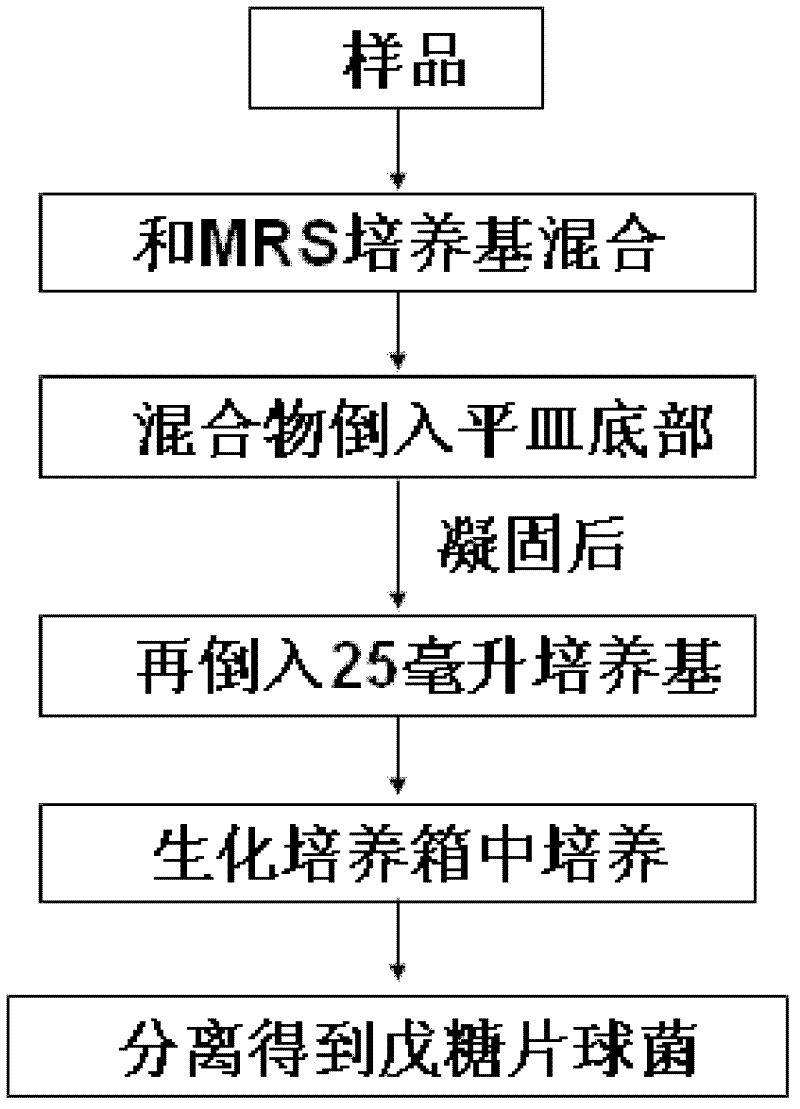Method for separating pediococcus pentosaceus
A technology of Pediococcus pentosaceae and sterilizers, applied in the direction of microorganism-based methods, separation of microorganisms, biochemical equipment and methods, etc., can solve the problems of increasing the workload of identification work, reducing the probability of isolation of Pediococcus pentosaceae, and achieving The effect of reducing workload
- Summary
- Abstract
- Description
- Claims
- Application Information
AI Technical Summary
Problems solved by technology
Method used
Image
Examples
Embodiment 1
[0028] The following examples are used to illustrate the present invention, but are not intended to limit the scope of the present invention.
[0029] Below in conjunction with accompanying drawing, the present invention is described in further detail:
[0030] A method for isolating Pediococcus pentosaceae, the steps are:
[0031] A. MRS solid medium preparation: The medium formula is (parts by weight): beef protein powder 10, fish juice 10, yeast extract juice powder 5, glucose 20, sodium acetate 5, diammonium citrate 2, magnesium sulfate 0.58, manganese sulfate 0.28, agar powder 15, add 1 ml Tween 80, dissolve in distilled water 1000, adjust the pH value to 6 or 6.2 or 6.3 or 6.4 or 6.6, put it in a sterilizing pot at 115 ℃ for 13 or 14 or 15 or 16 or 17 minutes, naturally cooled to 40 or 42 or 43 or 44 or 45 ℃.
[0032] B. Sample preparation: Take 1 ml of porcine intestinal digesta, mix it with sterile double-distilled water at a volume ratio of 1:10, vortex for 1 minute...
PUM
 Login to View More
Login to View More Abstract
Description
Claims
Application Information
 Login to View More
Login to View More - R&D
- Intellectual Property
- Life Sciences
- Materials
- Tech Scout
- Unparalleled Data Quality
- Higher Quality Content
- 60% Fewer Hallucinations
Browse by: Latest US Patents, China's latest patents, Technical Efficacy Thesaurus, Application Domain, Technology Topic, Popular Technical Reports.
© 2025 PatSnap. All rights reserved.Legal|Privacy policy|Modern Slavery Act Transparency Statement|Sitemap|About US| Contact US: help@patsnap.com

